Australia’s diverse landscapes and climates mean there’s always somewhere perfect to visit, regardless of the time of year. This guide will help you plan your Australian adventures throughout the calendar year, maximising your experience in each unique destination.
- January: Melbourne, Victoria
- February: Murray River Region, VIC/NSW
- March: Adelaide, South Australia
- April: Tasmania
- May: Sydney, New South Wales
- June: Uluru & Red Centre, Northern Territory
- July: Darwin & Top End, Northern Territory
- August: Tropical North Queensland
- September: Perth & Margaret River, Western Australia
- October: Gold Coast, Queensland
- November: Blue Mountains, New South Wales
- December: Broome, Western Australia
Just a heads up: Some of the links on this post may be affiliate links. That means if you make a purchase through them, I might earn a small commission (at no extra cost to you!). I only recommend products I genuinely like and think you’ll find useful. Thanks for supporting the blog!
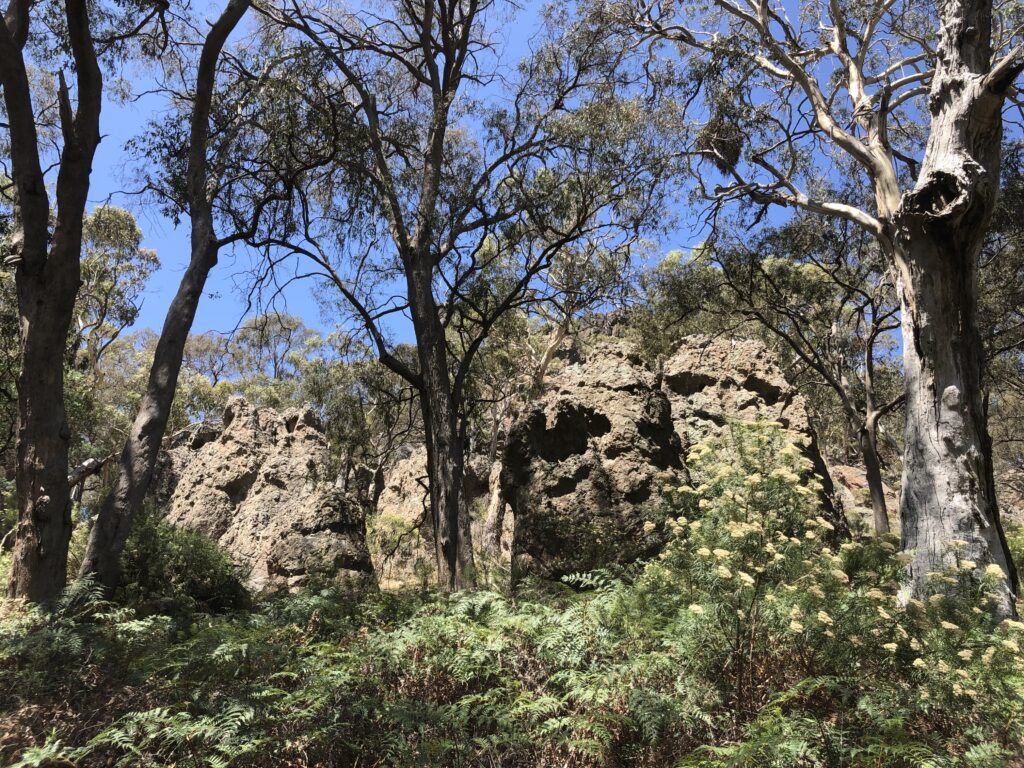
January: Melbourne, Victoria
Average Weather: Warm and dry, with temperatures averaging 25-27°C (although the internet says this is the average… as someone who lives in Melbourne, it can be a bit all over the place so prepare for outliers to this average on either side)
Why Visit: January is peak summer in Melbourne, bringing perfect weather for exploring both the city and the surrounding areas. Most importantly, it’s when the Australian Open tennis tournament takes place, drawing fans from around the world to Melbourne Park, and lots of fun activities all around.
What to Do:
- Attend the Australian Open (mid to late January)
- Take a day trip to the magnificent 12 Apostles along the Great Ocean Road
- Explore Melbourne’s famous laneways and café culture
- Visit St. Kilda for a beachside but cool city vibe
- Enjoy outdoor dining and rooftop bars in the warm summer evenings
- Vintage shopping
- If you’re interested in fun museums, check out my review of ACMI
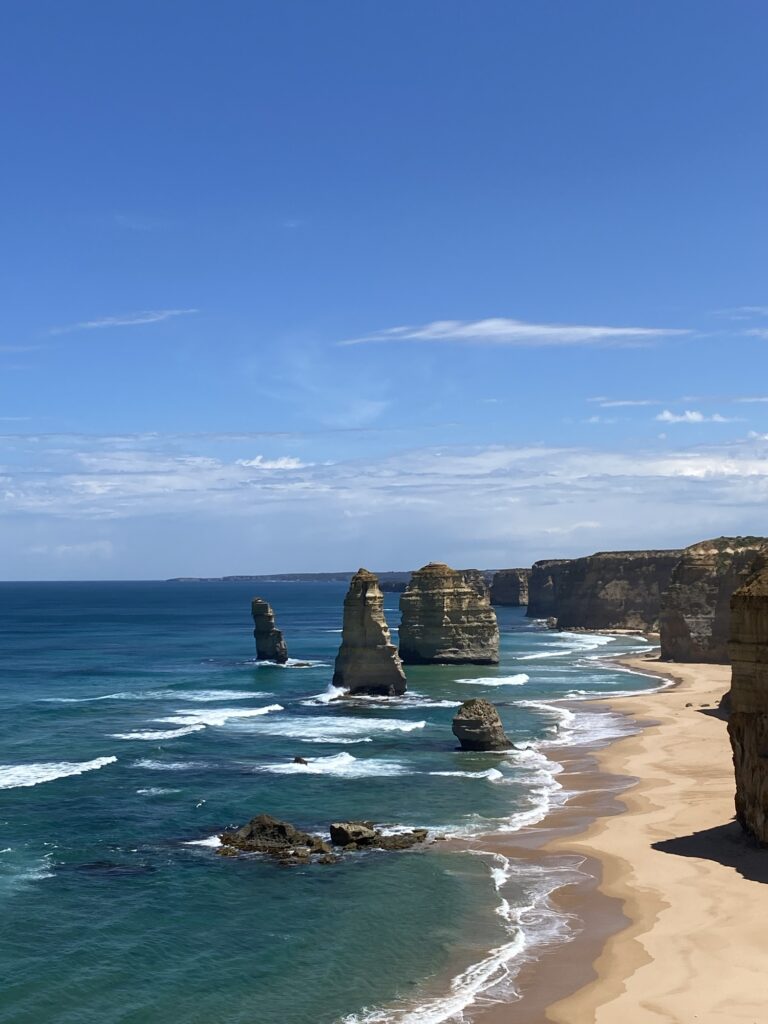


February: Murray River Region, VIC/NSW
Average Weather: Warm and mostly dry, with temperatures averaging 32°C during the day, but will cool down at night. (Echuca/Moama average is 31°C & Albury/Wodonga is 32°C which are both bigger towns, but there are many destinations all along the river)
Why Visit: February offers ideal conditions for water activities with warm air and water temperatures, long daylight hours, and typically stable weather patterns.
What to Do:
- Water skiing, wakeboarding, and tubing in ideal conditions
- Cruise the river on historic paddle steamers
- Explore the Port of Echuca’s historic precinct
- Visit local wineries in the surrounding regions
- Enjoy fishing, camping, and stargazing along the riverbank
- Experience local food festivals featuring regional produce
- Visit Bonegilla Migrant Experience if visiting near Wodonga
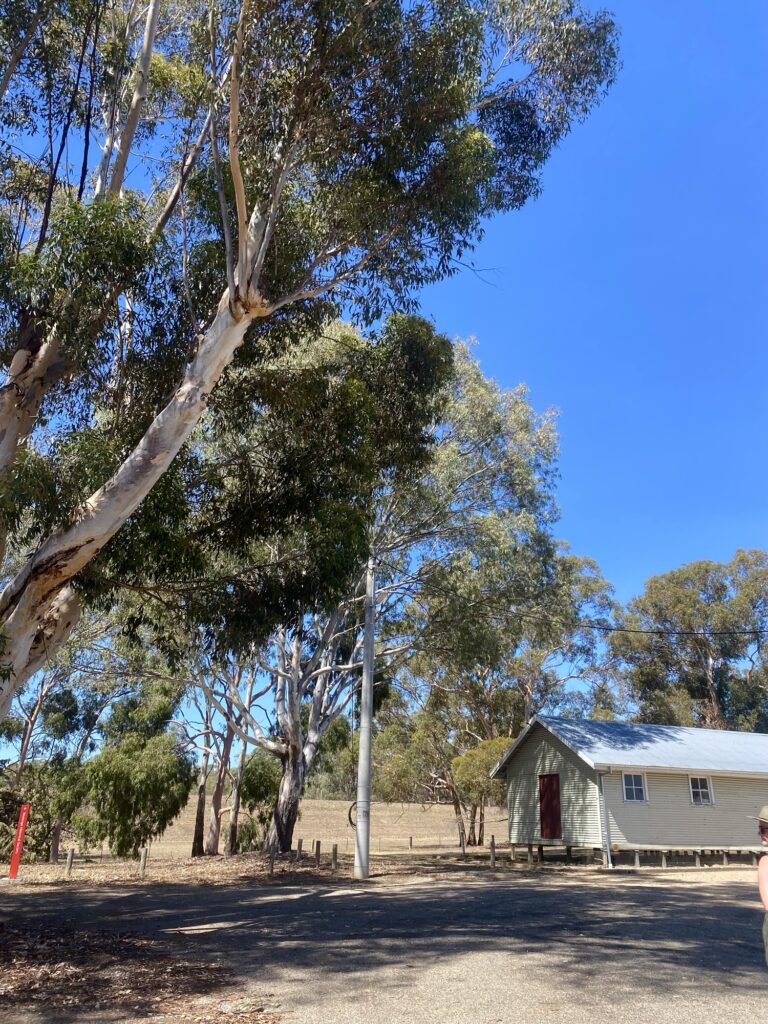
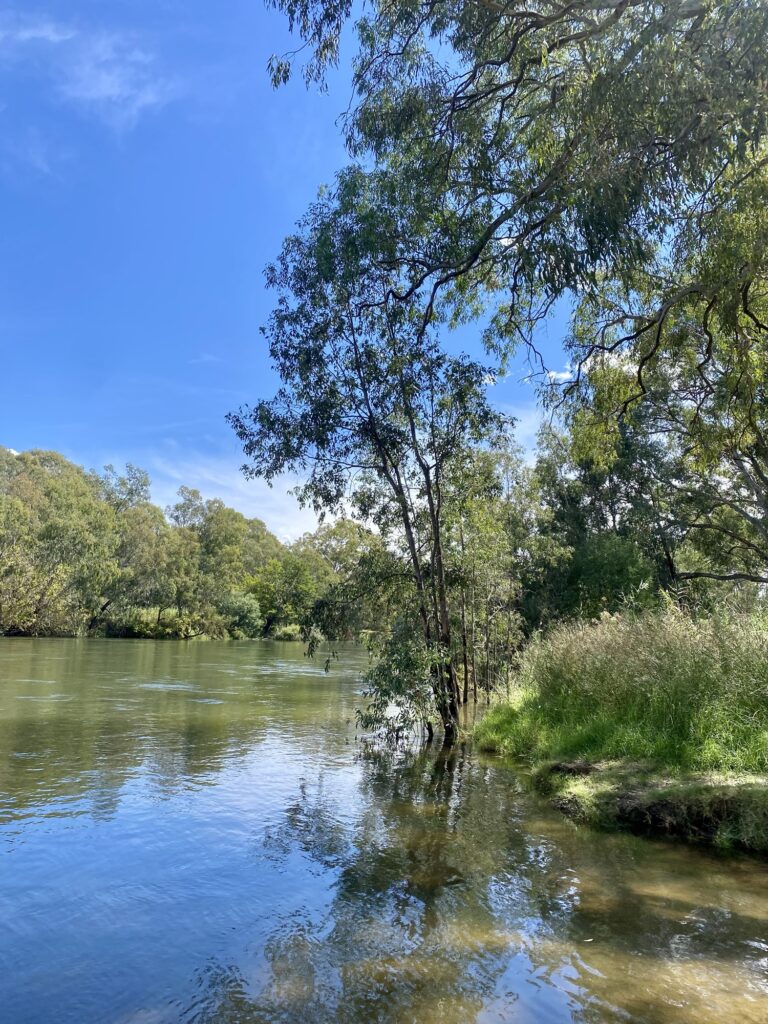
March: Adelaide, South Australia
Average Weather: Warm and mostly dry, with temperatures averaging 26°C
Why Visit: March is festival season in Adelaide! The city comes alive with the Adelaide Fringe Festival, transforming into Australia’s cultural hotspot.
What to Do:
- Immerse yourself in the Adelaide Fringe Festival, Australia’s largest arts festival
- Attend WOMADelaide, celebrating world music and dance
- Explore the nearby wine region of the Barossa Valley. (There are many tours for all your needs)
- Visit the beautiful beaches of Glenelg and Henley
- Wander through the Adelaide Botanic Gardens while the weather is still warm
- Experience the Adelaide Festival of Arts

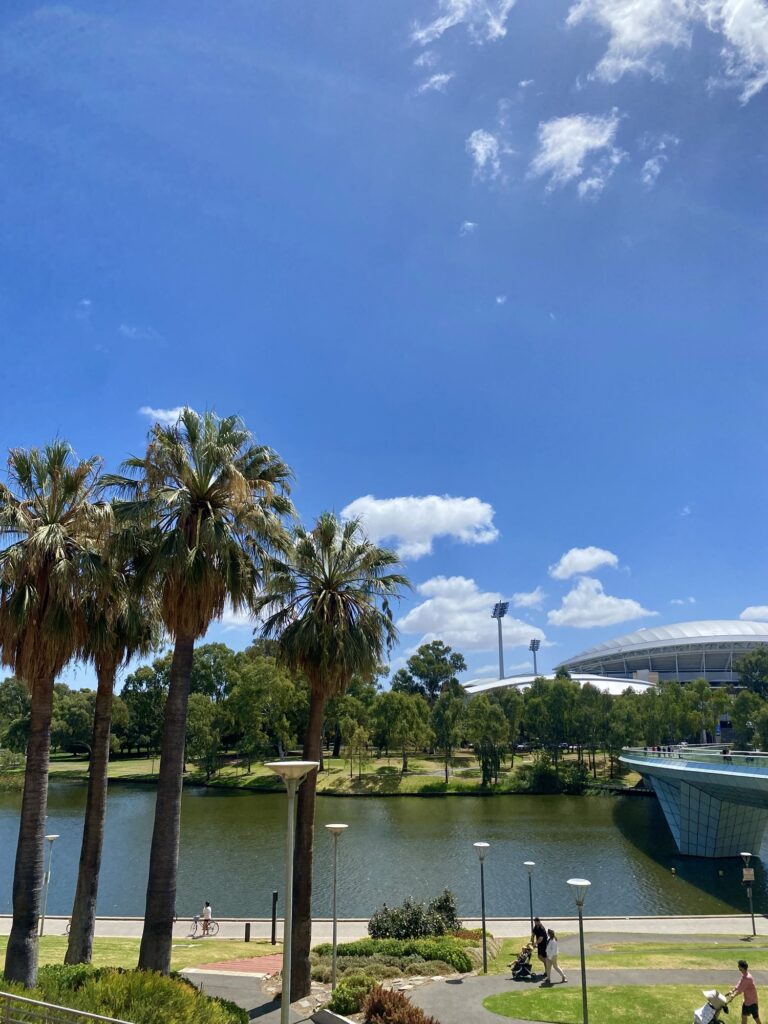
April: Tasmania
Average Weather: Mild autumn weather, with temperatures averaging 10-18°C
Why Visit: April offers Tasmania’s spectacular autumn colours, fewer tourists than summer, and comfortable hiking temperatures. The famous Fagus tree turns brilliant gold and orange during this time.
What to Do:
- Witness the stunning autumn colours throughout the state
- Experience the harvest festivals and food events
- Visit MONA in Hobart without summer crowds
- Hike Cradle Mountain with comfortable temperatures
- Enjoy seasonal produce at Salamanca Market
- Explore Port Arthur historic site
- Sample cool-climate wines during harvest season
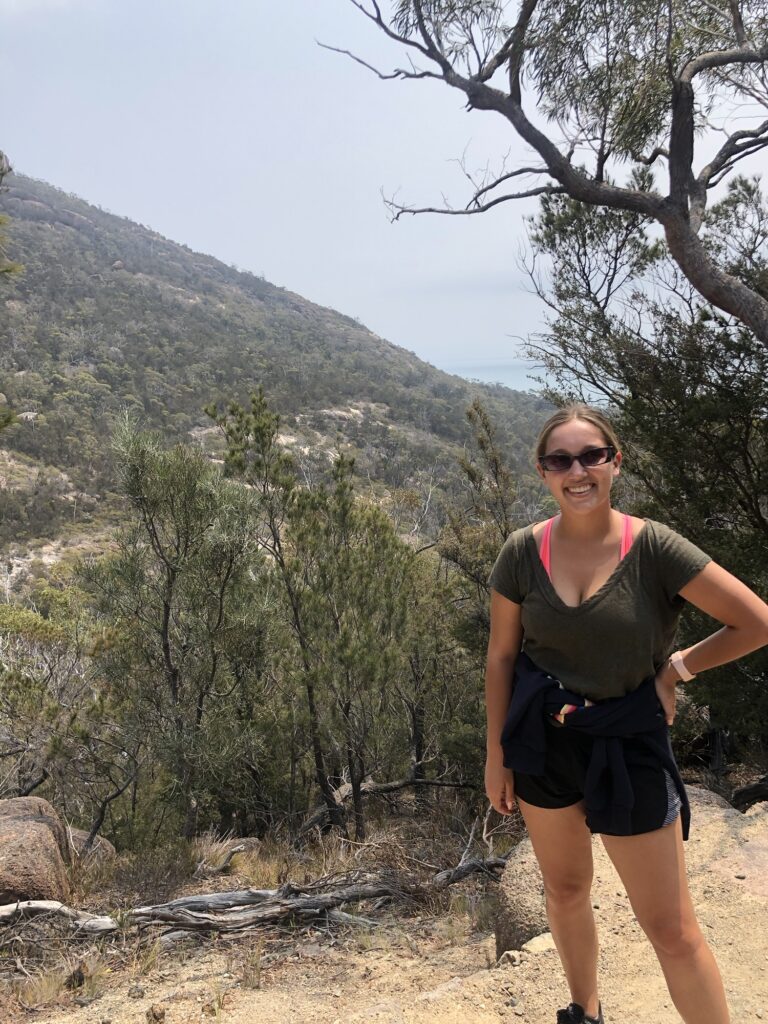

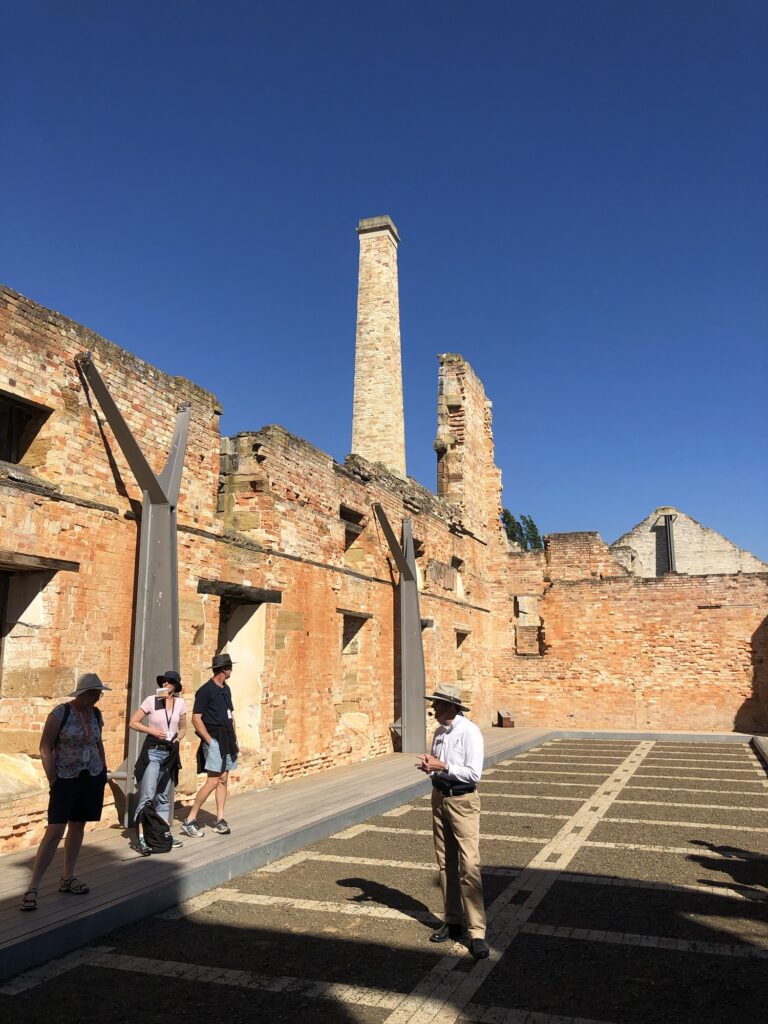
May: Sydney, New South Wales
Average Weather: Mild autumn weather, with temperatures averaging 12-22°C
Why Visit: May offers perfect mild weather for exploring Sydney, plus the spectacular Vivid Sydney festival of light, music, and ideas begins late in the month.
What to Do:
- Experience Vivid Sydney’s incredible light installations around the harbour
- Walk the iconic Bondi to Coogee coastal path in perfect hiking weather
- Visit Taronga Zoo
- Take the ferry to Manly for a local experience
- Explore the Royal Botanic Garden and The Rocks district
- Climb the Sydney Harbour Bridge in comfortable temperatures
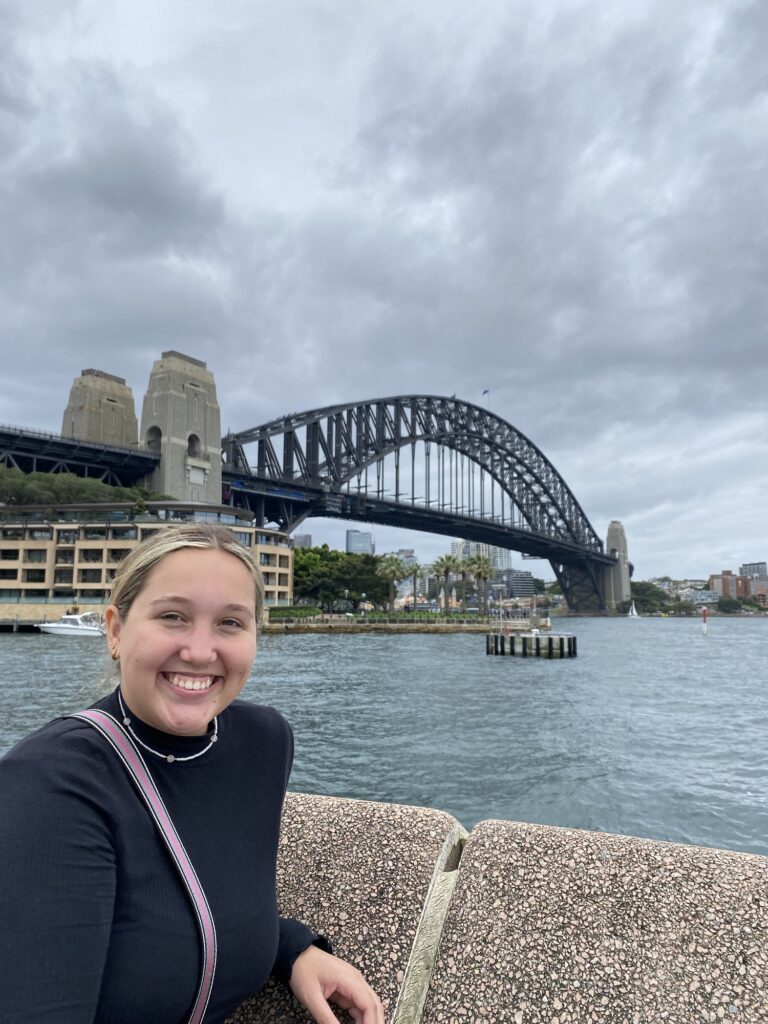


June: Uluru & Red Centre, Northern Territory
Average Weather: Cool and dry desert climate, with temperatures averaging 20°C in the day, but only 4°C at night. So definitely pack some layers, especially if you want to do the Uluru sunrise.
Why Visit: June’s cooler temperatures make exploring the desert comfortable, with warm days and cool nights. The clear winter skies offer spectacular stargazing opportunities.
What to Do:
- Watch sunrise and/or sunset at Uluru
- Hike around Kata Tjuta (many booking options here)
- Explore Kings Canyon
- Learn about Indigenous culture through guided tours
- Experience the Field of Light art installation
- Enjoy unparalleled stargazing in the clear desert night sky
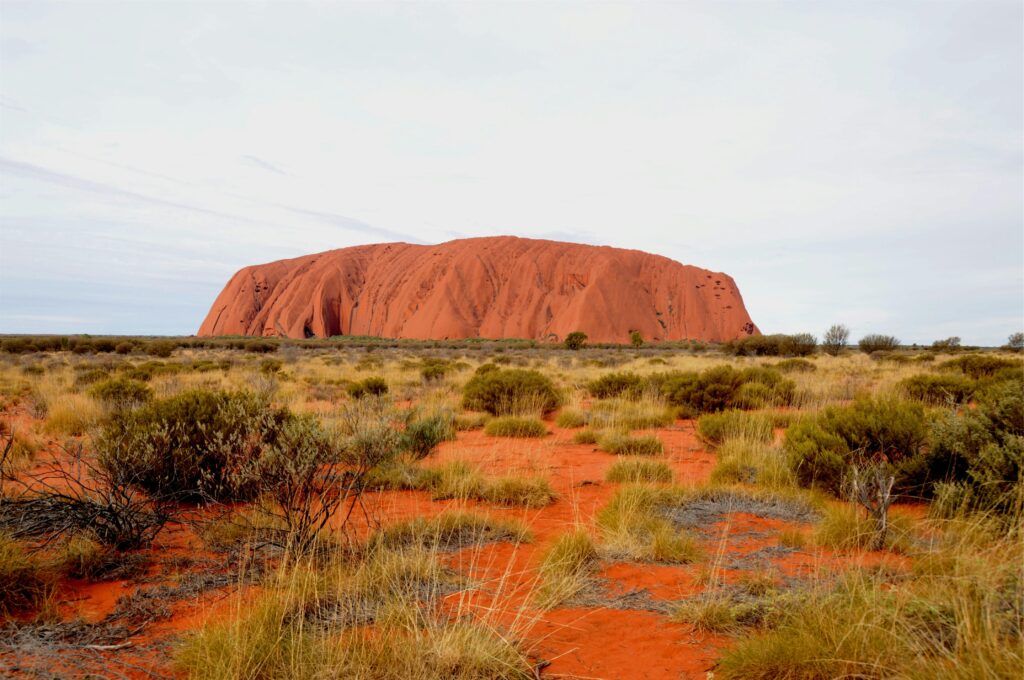
July: Darwin & Top End, Northern Territory
Average Weather: Warm and dry, with temperatures averaging 31°C (yes it is that hot even in the middle of winter)
Why Visit: July is during the Northern Territory’s dry season. This means perfect weather with minimal humidity, no rain, and comfortable temperatures to explore the region’s natural wonders.
What to Do:
- Visit Kakadu National Park when the waterways are more accessible (Many options are on offer, from if you want a half day tour or even up to 5 days)
- Explore Litchfield National Park‘s waterfalls and swimming holes
- Take a sunset harbour cruise
- Visit the famous Mindil Beach Sunset Market
- Take a day trip to the Tiwi Islands
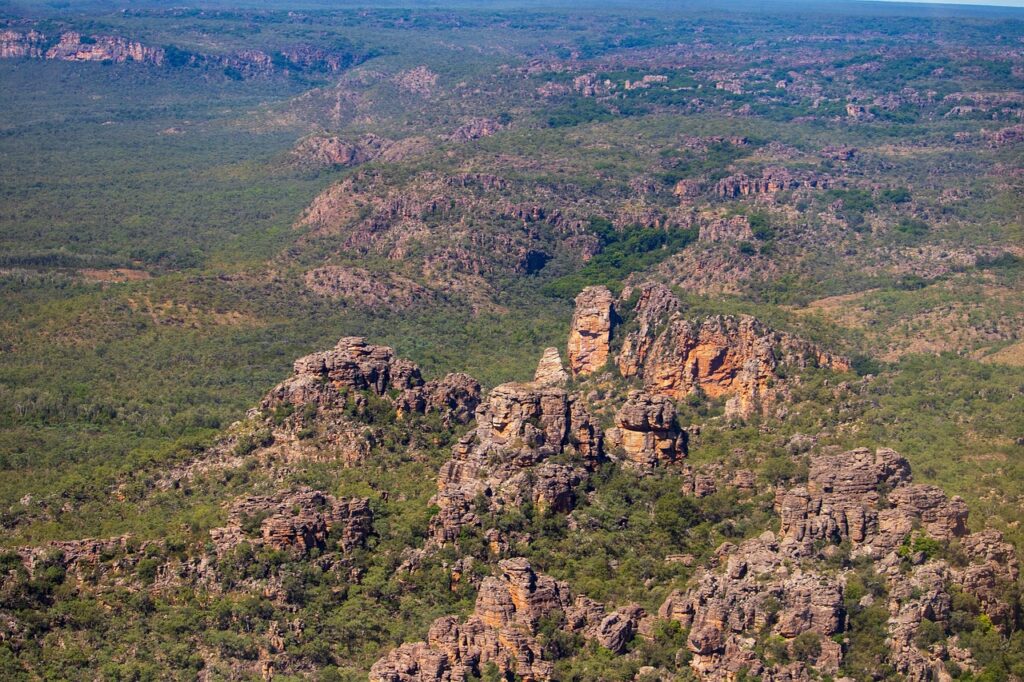
August: Tropical North Queensland
Average Weather: Warm and dry, with temperatures averaging 27°C in the day, and 17°C at night.
Why Visit: August offers the perfect weather to explore Tropical North Queensland. The dry season means clear waters for Great Barrier Reef diving and pleasant temperatures for rainforest exploration.
What to Do:
- Snorkel or dive the Great Barrier Reef from Cairns or Port Douglas
- Explore the ancient Daintree Rainforest
- Visit the white silica beaches of the Whitsunday Islands
- Take the Skyrail Rainforest Cableway and Kuranda Scenic Railway
- Experience Indigenous culture at the Tjapukai Aboriginal Cultural Park
- Spot crocodiles on a Daintree River cruise
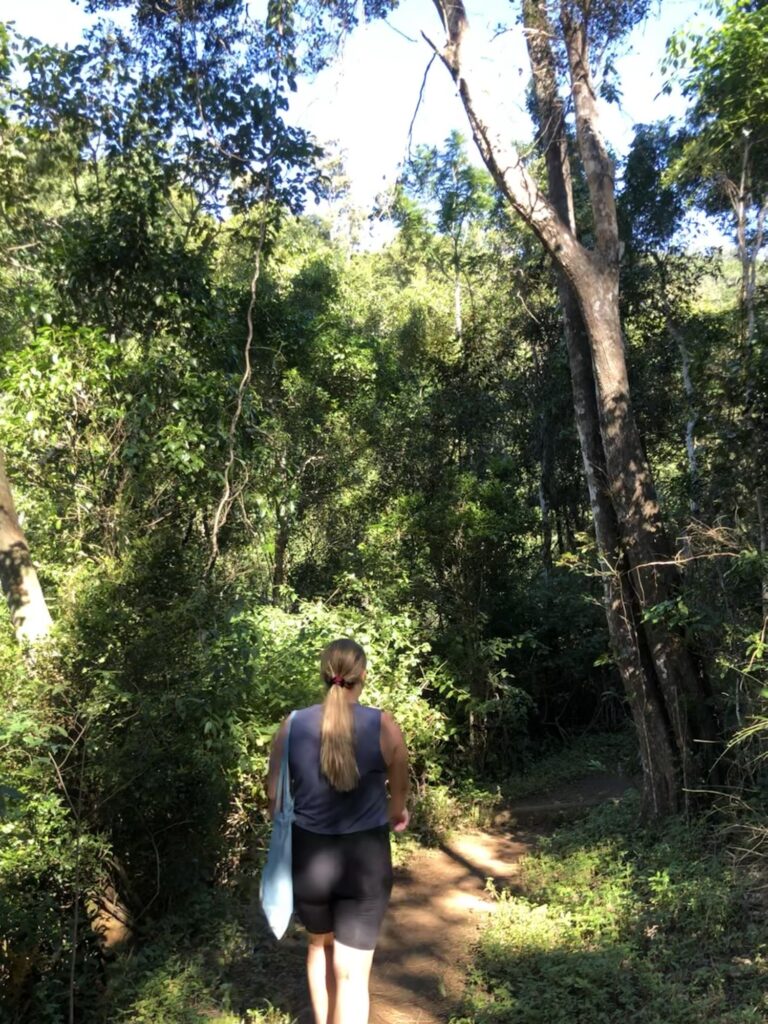
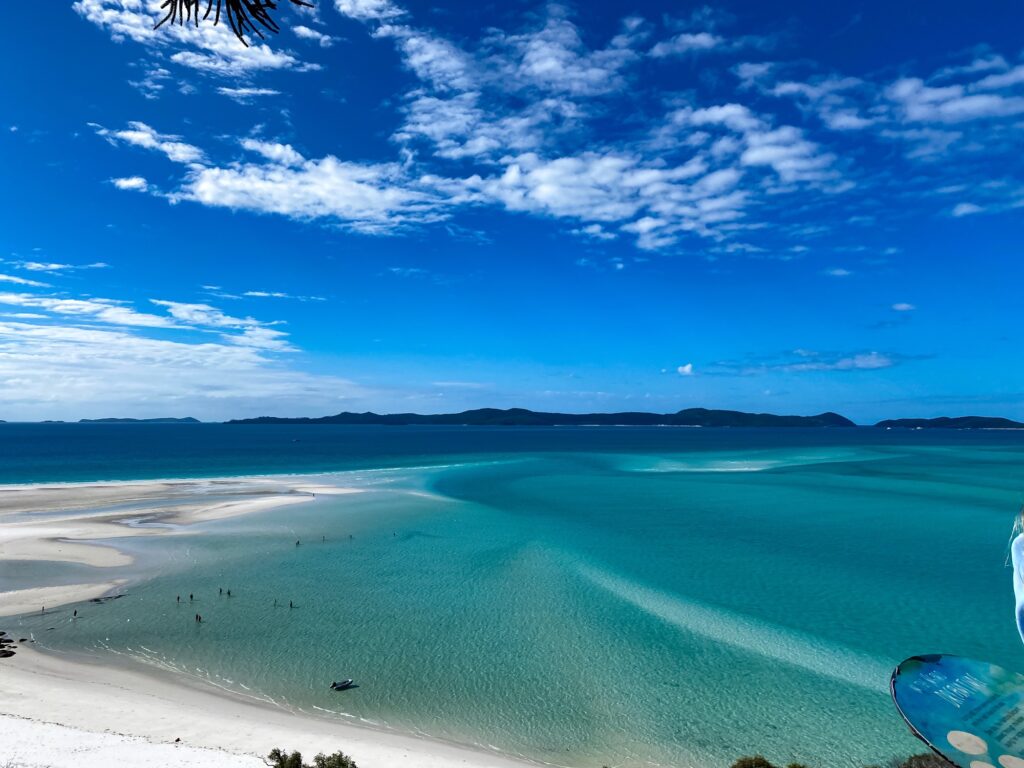

September: Perth & Margaret River, Western Australia
Average Weather: Mild spring weather, with temperatures averaging 21°C in Perth & 18°C in Margaret River.
Why Visit: September brings Perth’s famous wildflower season, with the countryside exploding in colour, while the Margaret River region starts warming up for perfect wine-tasting weather.
What to Do:
- Witness the spectacular wildflower displays in Kings Park
- Take wine tours through the Margaret River region
- Visit Rottnest Island and meet the quokkas
- Explore Fremantle’s historic buildings and vibrant markets
- Enjoy whale watching as humpbacks migrate along the coast
- Visit the spectacular limestone formations at the Pinnacles Desert
- Take a day trip to Wave Rock


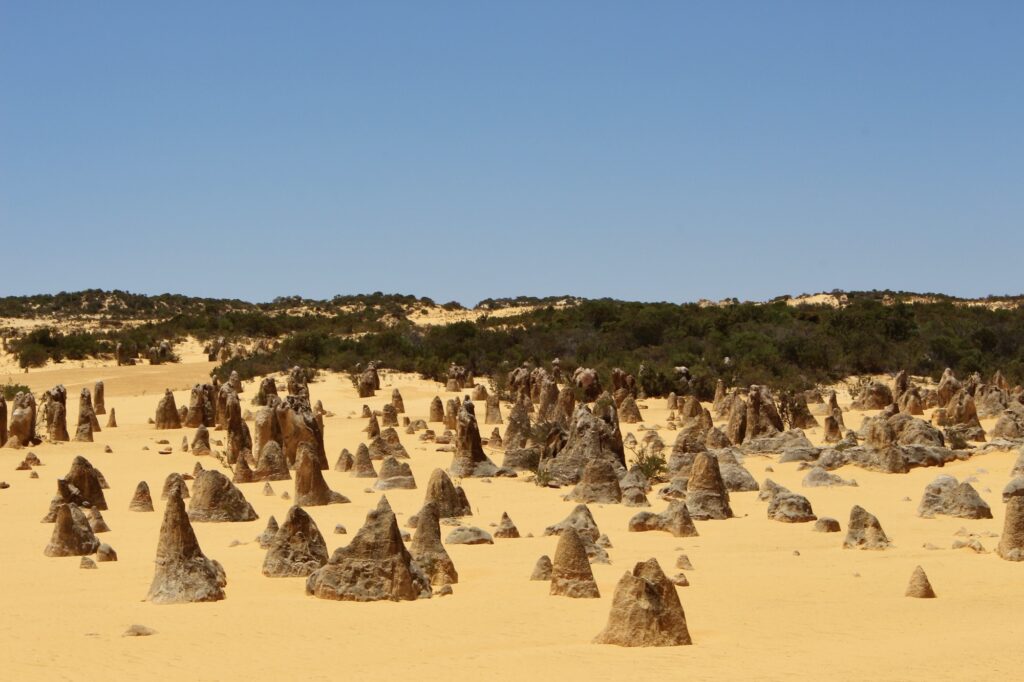
October: Gold Coast, Queensland
Average Weather: Warm and pleasant, with temperatures averaging 17-25°C (63-77°F)
Why Visit: October offers beautiful spring weather on the Gold Coast with warm days perfect for beach activities, but without the intense summer heat or holiday crowds. Ocean temperatures are comfortable for swimming, and there’s lower humidity than summer months.
What to Do:
- Enjoy the famous Gold Coast beaches & surf lessons
- Experience shorter wait times at theme parks (Dreamworld, Movie World etc.)
- Take advantage of perfect weather for hiking in the Gold Coast Hinterland
- Spot migrating whales on their southern journey
- Visit the Currumbin Wildlife Sanctuary when animals are active in mild temperatures
- Experience the Gold Coast 500 Supercars event (typically held in October)
- Enjoy outdoor dining at Broadbeach and Marina Mirage



November: Blue Mountains, New South Wales
Average Weather: Mild to warm spring weather, with temperatures averaging 24°C, but with cool but nice evenings of 14°C
Why Visit: November offers perfect hiking weather in the Blue Mountains, with warm days, blooming wildflowers, and flowing waterfalls after spring rains.
What to Do:
- Hike to iconic landmarks like the Three Sisters and Wentworth Falls
- Ride the world’s steepest passenger railway at Scenic World
- Explore the spectacular Jenolan Caves
- Visit the charming mountain towns of Leura and Blackheath
- Experience canyoning or rock climbing adventures
- Enjoy the gardens and parks in full spring bloom
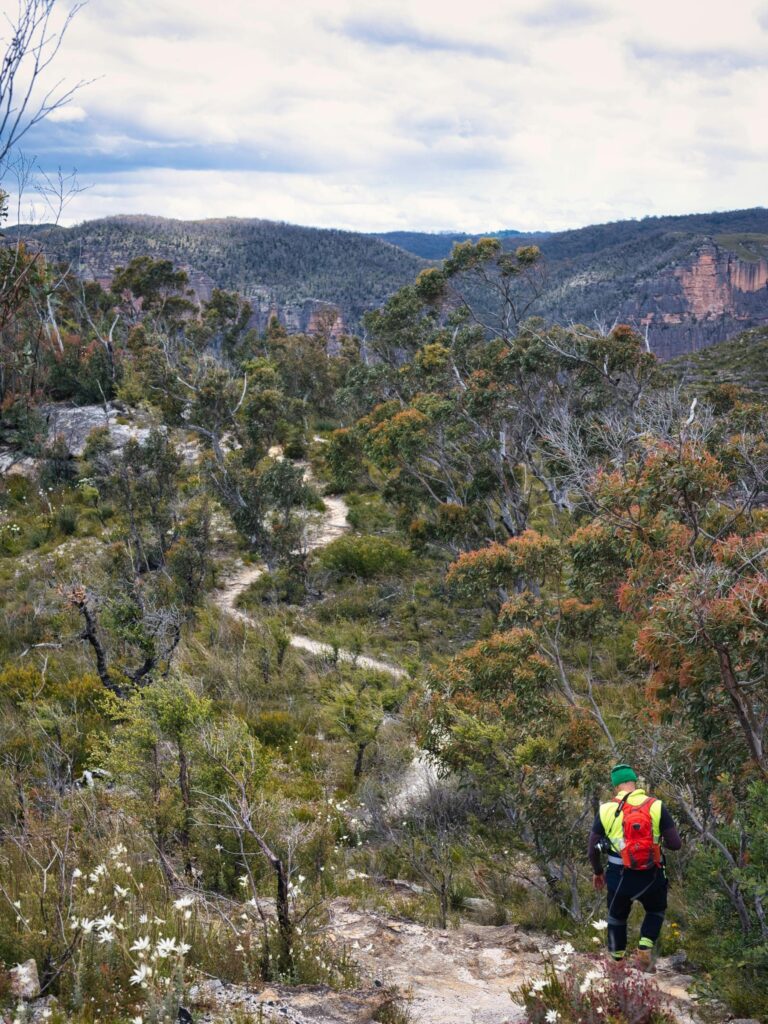
December: Broome, Western Australia
Average Weather: Hot and occasionally humid, with temperatures averaging 26-34°C, so pack your swimwear & light clothing.
Why Visit: December marks the beginning of the green season in Broome, with occasional spectacular thunderstorms and fewer tourists.
What to Do:
- Relax on the famous Cable Beach and watch its legendary sunsets
- Ride camels along the shoreline at sunset
- Visit the Horizontal Falls
- Learn about Broome’s pearling history
- Explore Gantheaume Point for dinosaur footprints and stunning red cliffs against turquoise water
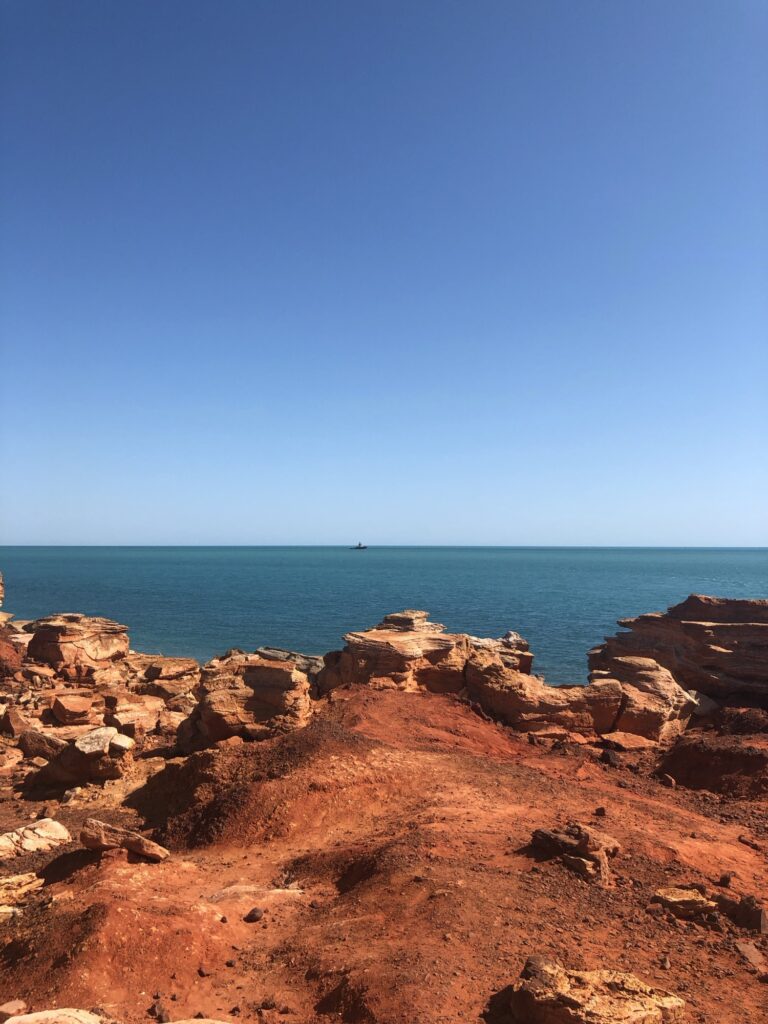


Australia’s vast size and climate diversity mean you can find the perfect destination any month of the year. Whether you’re seeking cultural festivals, outdoor adventures, tropical escapes, or urban explorations, timing your visit to each region ensures an optimal experience. Pack your bags and prepare for an unforgettable journey through Aus!
